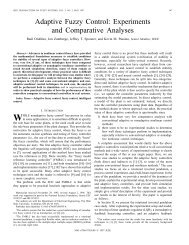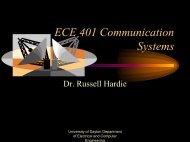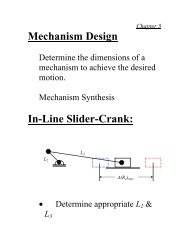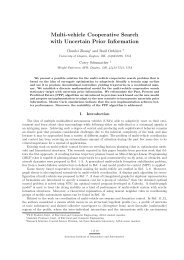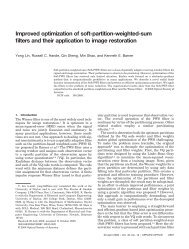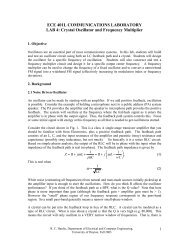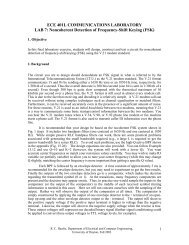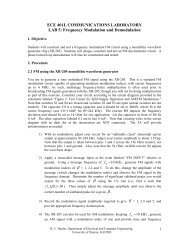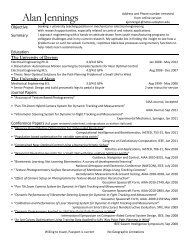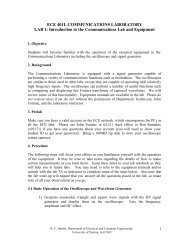here - University of Dayton : Homepages
here - University of Dayton : Homepages
here - University of Dayton : Homepages
You also want an ePaper? Increase the reach of your titles
YUMPU automatically turns print PDFs into web optimized ePapers that Google loves.
Harary Memorial Lecture<br />
Saturday 11:20–12:20 109 Oelman Hall<br />
Recent results on graph searching<br />
Derek Corneil<br />
<strong>University</strong> <strong>of</strong> Toronto<br />
Abstract<br />
Searching a graph is a fundamental operation that is the cornerstone <strong>of</strong> many graph algorithms.<br />
In the early 1970s most graph searching was either Breadth First Search (BFS) or Depth First Search<br />
(DFS). Later, Lexicographic BFS (LBFS) was introduced as a simple linear time algorithm to recognize<br />
chordal graphs. Somewhat surprisingly, LBFS was largely ignored until the 1990s, when it was shown<br />
to be useful for various problems on restricted families <strong>of</strong> graphs. In particular, LBFS was applied<br />
in a multi-sweep fashion w<strong>here</strong> ties <strong>of</strong> which vertex to choose next were broken by appealing to a<br />
previous sweep. Correctness pro<strong>of</strong>s <strong>of</strong> many <strong>of</strong> these algorithms used an elegant 4-vertex condition that<br />
characterizes vertex orderings that are LBFS orderings. Since the late 1990s, many new applications <strong>of</strong><br />
LBFS have appeared. Furthermore, similar 4-vertex characterizations have been discovered for other<br />
graph searches such as BFS, DFS and Lexicographic DFS.<br />
In this talk, we will give an overview <strong>of</strong> this work, as well as a summary <strong>of</strong> open problems.<br />
10




